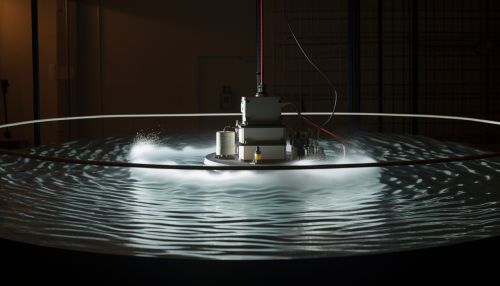Shear Wave
Introduction
A shear wave is a type of elastic wave that moves through a medium, causing the particles of the medium to move perpendicular to the direction of the wave propagation. This is in contrast to longitudinal waves, where the particles move parallel to the direction of wave propagation. Shear waves play a significant role in many fields, including geophysics, civil engineering, and medicine.


Physical Properties
Shear waves are characterized by their unique motion. As the wave moves through a medium, it causes the particles of the medium to move in a direction perpendicular to the direction of wave propagation. This motion is often described as a "shearing" motion, hence the name "shear wave".
The speed at which a shear wave travels, known as the shear wave velocity, is dependent on the properties of the medium through which it is traveling. These properties include the medium's density, elasticity, and Poisson's ratio.
Generation of Shear Waves
Shear waves can be generated in a variety of ways. In geophysics, they are often generated by earthquakes or other seismic events. In civil engineering, they can be generated by machinery or other mechanical forces. In medicine, they can be generated by specialized medical devices for diagnostic purposes.
Applications
Geophysics
In geophysics, shear waves are used in the study of earthquakes and the internal structure of the Earth. The speed at which shear waves travel through the Earth's interior provides valuable information about the Earth's composition and structure.
Civil Engineering
In civil engineering, shear waves are used in the assessment of soil and rock properties. The speed at which shear waves travel through soil or rock can provide information about the material's density, elasticity, and Poisson's ratio. This information can be used in the design and construction of buildings, bridges, and other structures.
Medicine
In medicine, shear waves are used in a technique known as elastography, which is used to measure the stiffness or elasticity of soft tissue. This technique is often used in the diagnosis of liver diseases, as the stiffness of the liver can be an indicator of liver fibrosis or cirrhosis.
